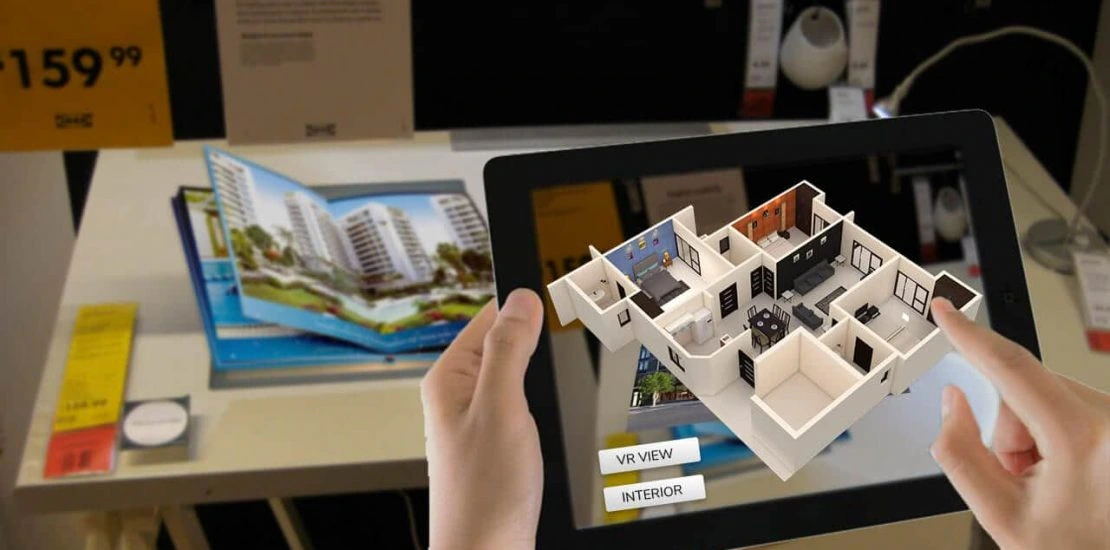AR/VR App Development - Best Practices for 2025: What Really Works?
Augmented and virtual reality have moved well beyond novelty status. Whether it’s retail, healthcare, real estate, or marketing, ar/vr app development is now part of the larger conversation. But as the industry matures, so does the need for clarity on how to actually build good AR/VR experiences.
If you're looking to create an app in 2025, here's a guide that lays down practical, no-nonsense advice, without fluff or filler.
Best practices for AR/VR app development in 2025
The best AR/VR apps in 2025 are designed with the user in mind, tested across devices, and built to be stable, secure, and easy to use.
Whether you’re building for training, retail, or customer engagement, following a few core practices can make or break your project:
- Start with user flow, not features.
Too many AR/VR apps get bogged down in effects and interactivity. Instead, think about how the user moves through your experience. What are they supposed to do? What do they see first? Is it obvious where to look or what to click? - Performance matters.
High-resolution assets are great, but not if they slow down the app. Optimize for smooth framerates. Make sure textures and 3D models don’t overload the device, especially in mobile-first builds. - Test in real-world conditions.
This is a big one. Don’t just test in perfect lighting or on high-end phones. What happens when someone’s on shaky WiFi? What if there’s glare? Use varied conditions for QA. - Secure your user data.
AR and VR apps often require access to location, camera, and sometimes even biometric data. If you’re collecting anything, make sure it's stored securely. Follow region-specific privacy laws like GDPR and CCPA. - Design for cross-platform.
Users may switch between mobile, headset, and desktop. A good ar vr app development company will build with Unity, WebXR, or other engines that allow multi-platform deployment without duplicating code.
Key considerations to shortlist top AR/VR app development companies in the US
The best AR/VR companies focus on experience design, technical expertise, and long-term support, not just flashy portfolios.
If you're planning to hire a virtual reality app development company, especially in the US, it's easy to get distracted by big brand names. Instead, focus on qualities that actually impact your end product:
Why are Hybris Product Configurators Leading the Market in 2025?
In 2025, if you are planning to launch an eCommerce site, you need comprehensive commercial cloud solutions that provide advanced personalization, AI-powered merchandising, and scalable architecture that supports complex global deployments while maintaining performance. In this regard, SAP Hybris is becoming a popular enterprise eCommerce framework due to its robust omnichannel capabilities, extensive B2B functionality, and seamless integration with existing SAP business systems.
- Do they build for your industry?
A lot of players in the ar/vr market are focused on specific industry niches. A retail-focused AR firm may not be right for a healthcare project. - How involved are they in the creative process?
Good firms don’t just code; they shape experiences. - Can they work across platforms like headsets, phones, and web?
- Will they provide ongoing updates and support?
Or do they hand over the code and vanish?
At KiXR we have a sectionerse team that has expertise in several fields and that is what makes us an industry-agnostic ar vr app development company. We stand out by building branded experiences, virtual try-ons, 3D product showcases, real-estate walkthroughs, digital twins and even digital showrooms. We don’t just build apps but we bring a strong mix of product thinking, storytelling, and technology.
How virtual reality app development is transforming digital marketing?
Brands are using VR to build deeper engagement, simulate experiences, and help customers make better decisions before buying.
The buzz around “immersive storytelling” might feel a bit overplayed, but in marketing, virtual reality app development has proven itself useful in very real, measurable ways:
- Try before you buy:
Furniture brands are letting users place 3D sofas in their homes through mobile AR. Fashion labels now offer virtual fitting rooms that reduce return rates. - Virtual store tours:
Instead of a flat website, users can walk through a digital showroom which is complete with clickable hotspots, live chat, and integrated checkout. - Product demos:
VR allows hands-on previews without needing the actual physical product. This is huge for high-cost goods like appliances or cars.
The goal here is not to impress but to give users something useful. Done well, virtual reality app development removes doubt from the buying process and that directly affects conversions.
What’s new in 2025? A few things worth noting
- WebAR is more stable than ever:
You can now run AR experiences straight from a browser with better speed, tracking, and animation support. No downloads. No app installs. For marketers, this is a win. - Headsets are getting cheaper:
Meta Quest 3 and Apple Vision Pro are opening up new audiences. Even smaller companies are trying VR campaigns because headset usage is slowly climbing. - Real-time 3D is becoming a norm:
Tools like Unity and Unreal Engine are powering everything from training simulations to interactive marketing booths. A smart virtual reality app development company knows how to handle both the creative and the technical side.
Common mistakes to avoid
Let’s keep it real: plenty of AR/VR projects don’t pan out. And the reasons are usually avoidable:
- Too much focus on tech; not enough on value:
A cool animation means nothing if the app doesn’t solve a problem. - Ignoring user comfort:
Motion blur, bad frame rates, and clunky controls make users uninstall fast. - Poor onboarding:
Especially for first-time users; clear prompts and guidance are essential. - Neglecting updates:
The ARKit or WebXR update breaks your app? You’re stuck unless your ar vr app development company is ready to patch it fast.
Quick tip for brands: Keep it simple!
You don’t have to go full metaverse. Even small-scale AR features like scanning a product to see reviews or a quick virtual tour can create impact. Talk to users. See where a visual layer might help them decide better or faster. Then build from there.
Building a solid AR/VR app in 2025 doesn’t require magic; it just needs smart planning,
solid testing, and the right team behind it.
Whether you're working with an experienced
virtual reality app development
company or exploring an internal build: stick to basics—that is—design for
real users; test like crazy; build only what adds value.
Skip the hype and focus on
what works.
Kavita has been adept at execution across start-ups since 2004. At KiKsAR Technologies, focusing on creating real life like shopping experiences for apparel and wearable accessories using AI, AR and 3D modeling


